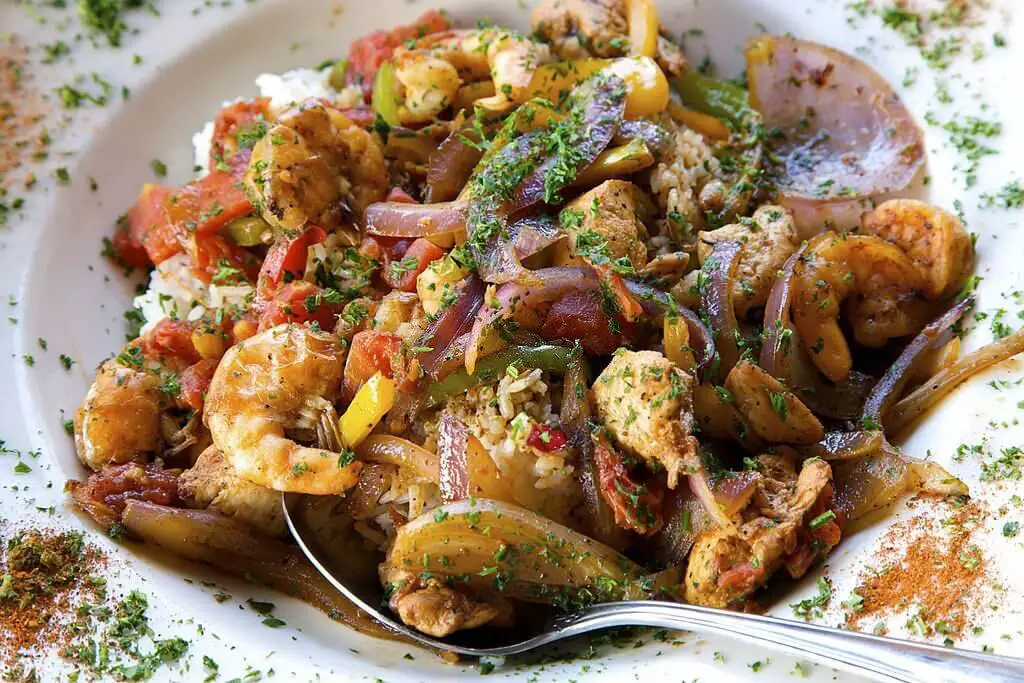Many people enjoy Jambalaya since its ingredients can be found in a wide variety of stores. Jambalaya is a dish that combines meat, vegetables, and rice. You can add tomatoes, onions, sausage, andouille, shrimp, crawfish, chicken, and more.
Jambalaya is time-consuming to make, which might be an issue for those who are short on leisurely activities. Jambalaya is a spicy and flavorful dish that you shouldn’t leave off the menu. So, can you make Jambalaya ahead of time and freeze it?
Can you freeze jambalaya? The answer is yes. A prepared batch of jambalaya can be stored in the freezer for up to two months. As jambalaya contains rice, which turns mushy when frozen and thawed, most people advise against freezing it. There are, however, techniques to ensure that your Jambalaya freezes without losing its flavor. The ingredients for jambalaya can be frozen for later use.
Freezing either Cajun or Creole Jambalaya works, but the rice will become mushy when thawed and the shrimp will lose their firmness.
Tomatoes, a key ingredient in Creole cooking, give Jambalaya its distinctive red hue and set it apart from its Cajun cousin. And tomatoes aren’t in the Cajun version. In contrast to its Creole counterpart, Cajun jambalaya has a far lower liquid content.
How to Freeze Jambalaya
It’s common knowledge that storing rice in the freezer is a bad idea. Yet, Jambalaya only contains a small amount of rice. It freezes quite well because of the acidic ingredients used in its preparation. Nevertheless, there are steps you can take to guarantee that your jambalaya freezes well and correctly in the freezer, so it’s not just a matter of storing it properly.
Step 1: Prevent The Rice And Shrimp From Going Mushy
If you freeze your Jambalaya, you may expect the flavor to deteriorate. Hence, a certain amount of flavor disappointment is to be anticipated.
One of the most important components of Jambalaya is the rice, therefore, there are a few things you can do to prevent it from becoming mushy and ruining the dish.
To begin, you can freeze your jambalaya without adding any rice. When you are ready to eat it, bring the pot containing the frozen jambalaya to a boil, then stir in the rice that has already been parboiled. Hence, it will not get very mushy. Because the rice is already present in the Jambalaya, this won’t be much assistance if the freezing was not planned beforehand. The best thing to do now is to vacuum seal the Jambalaya to prevent the rice from drying out and to keep the moisture in the rice. In doing so, the rice won’t get mushy when thawed.
Half-cooking the rice before adding it to the Jambalaya is another method for preventing the rice from getting mushy. Leaving the rice somewhat firm before freezing ensures that it will be properly cooked after being thawed and reheated.
It’s not easy to maintain the shrimp’s typical texture. Shrimp is not required for this Jambalaya recipe. If you absolutely must include shrimp, know that its flabby texture won’t compromise the dish’s flavor. It’s okay to proceed.
Step 2: Follow The Recipe
Cook the jambalaya as instructed by your recipe once you’ve figured out how to prevent the rice from turning mushy and the shrimp from becoming flabby. The next step is to wait until it has reached room temperature before beginning to put it into the storage bags.
Condensation might form in your jambalaya if you store it while it’s still warm, adding more moisture to the dish.
Step 3: Storage
When freezing Jambalaya, it’s important to keep it sealed and out of the air. Separate the Jambalaya into 2-cup servings and store them in Ziploc freezer bags.
In order to release air from the bags, you need to flatten the jambalaya bag and press it. To better insulate against the freezer’s chilly air, use two bags.
Step 4: Freezing
When putting the bags of food into the freezer, make sure to write down what’s inside and the date of the freeze. This could help you keep track of what’s in your freezer and for how long, as well as manage your meal planning and schedule.
How to Reheat Frozen Jambalaya
Jambalaya that has been frozen can be thawed and re-heated in the microwave, oven, or on the stove. It really just comes down to personal preference.
Jambalaya can be thawed in the fridge before being reheated in the oven. It takes the most time out of the three options. Saving time during the reheating process is possible if you defrost it first. Jambalaya can be heated in the oven for 20 to 30 minutes if you preheat the oven first to 300 degrees Fahrenheit, set it in an open dish, and cover it with aluminum foil.
Frozen jambalaya can be thawed by placing it in a pot of boiling water on the burner. Effective and quick, this method eliminates the need to remove the Jambalaya from its storage bags.
Things aren’t too challenging in the microwave either. Jambalaya is best when reheated, so give it a day to defrost in the fridge before putting it in the microwave.
Jambalaya can be reheated in the microwave by covering the container with a paper towel, placing it in the microwave with a glass of water to help retain moisture, and microwaving it for 30 seconds at a time while stirring it after each heating cycle.
How to Recognize Spoiled Jambalaya
Jambalaya that has gone bad can be identified at a glance. A person can get sick by eating spoiled Jambalaya. Jambalaya that has gone bad would smell and look terrible. In the event that you discover this, do not consume it and instead discard it.



